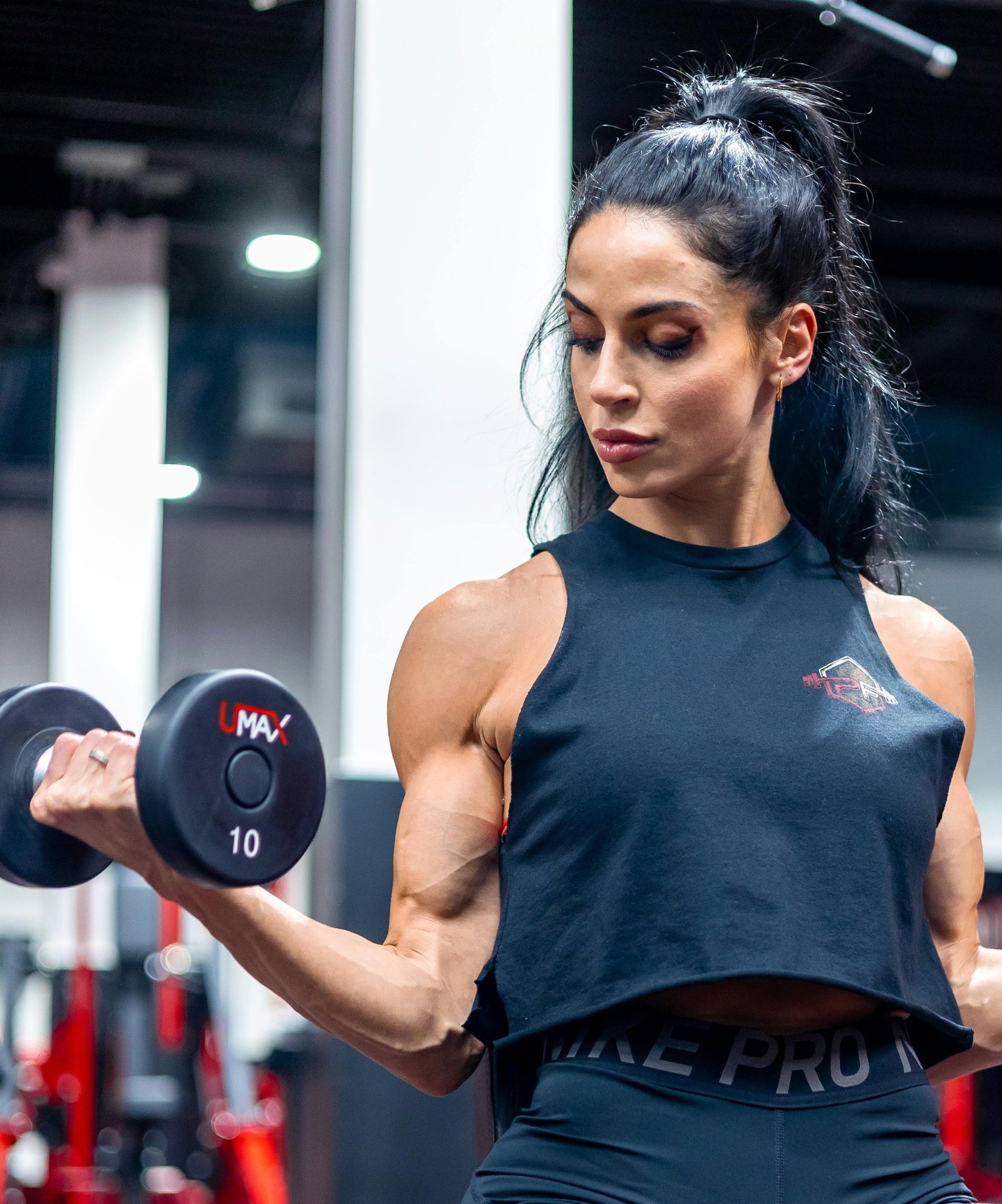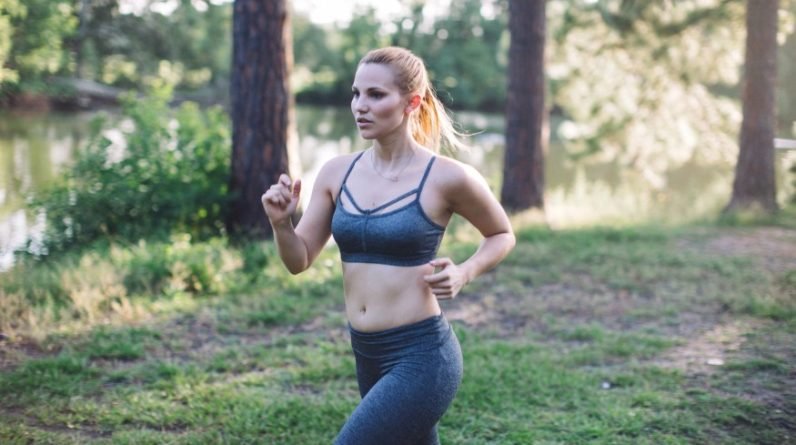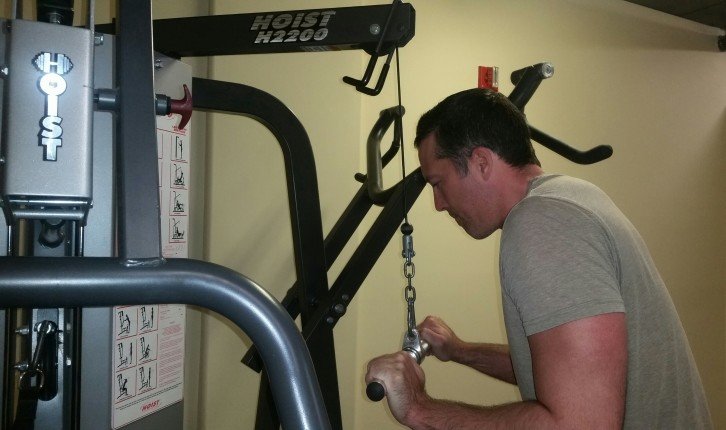
How To Be A Fit Girl?
How To Be A Fit Girl? Are you ready to embark on a journey to become a fit girl? Whether you’re a fitness enthusiast or a complete beginner, this article is here to guide you on your quest for a healthier lifestyle. From workout routines to nutrition tips, we’ll provide you with all the tools you need to embrace a fit and active lifestyle. Get ready to unleash your inner fit girl and start this exciting journey towards a stronger, fitter, and happier you.
Get Fit: A Beginner’s Guide on How to Be a Fit Girl
Setting Goals
Identify specific fitness goals
Setting specific fitness goals is an essential first step in your journey to becoming a fit and healthy individual. Take some time to reflect on what you want to achieve with your fitness routine. Do you want to lose weight, gain muscle, improve your cardiovascular endurance, or simply feel more energetic and confident in your body? Identifying specific goals will help you stay focused and motivated throughout your fitness journey.
Set achievable milestones
While it’s great to have big, long-term goals in mind, it’s equally important to break them down into smaller, more achievable milestones. Setting achievable milestones will give you a sense of progress and accomplishment along the way. For example, if your ultimate goal is to lose 20 pounds, you can set a milestone of losing 2 pounds per week. This way, you have a clear and tangible target to work towards each week, making it easier to stay motivated and track your progress.

Create a timeline for reaching goals
Once you have identified your specific fitness goals and set achievable milestones, it’s time to create a timeline for reaching those goals. Having a clear timeline will not only help you stay organized, but it will also ensure that you are giving yourself enough time to reach your goals safely and without feeling overwhelmed. Consider factors such as your current fitness level, lifestyle commitments, and any upcoming events or deadlines that may affect your fitness routine. By establishing a realistic timeline, you can create a workout plan that is both effective and sustainable in the long run.
Creating a Workout Routine
Consult with a fitness professional
Before diving headfirst into a new workout routine, it is highly recommended to consult with a fitness professional. They can provide valuable guidance and expertise tailored specifically to your individual needs and goals. A fitness professional can help assess your current fitness level, identify any potential limitations or health concerns, and design a workout routine that is safe, efficient, and effective for you. Their knowledge and experience will set you up for success and prevent any unnecessary injuries or setbacks.
Choose activities you enjoy
One key aspect of creating a successful workout routine is choosing activities that you genuinely enjoy. Engaging in activities you love will make your fitness journey more enjoyable and sustainable in the long run. Experiment with different types of exercises and fitness classes to find what sparks joy and keeps you motivated. Whether it’s dancing, hiking, swimming, or weightlifting, there are countless options to explore. Remember, fitness should be fun and something you look forward to, so don’t be afraid to mix it up and try new things!
Include a variety of exercises
To keep your workouts interesting, challenging, and well-rounded, it’s important to include a variety of exercises in your routine. Incorporating different types of exercises will work different muscle groups, prevent boredom, and help you avoid hitting a plateau. Aim for a well-balanced workout routine that includes cardiovascular exercises, strength training, flexibility exercises, and restorative activities. This way, you will not only achieve a fit and toned physique but also improve your overall health and well-being.
Cardiovascular Exercise
Select suitable cardio exercises
Cardiovascular exercise, also known as cardio, is a crucial component of any fitness routine. It is essential for improving your heart health, burning calories, and increasing your overall endurance. When selecting suitable cardio exercises, consider your personal preferences, physical capabilities, and any existing medical conditions. Options such as running, cycling, swimming, dancing, and rowing provide excellent cardiovascular benefits. Choose activities that get your heart rate up and make you break a sweat while still being enjoyable for you.
Determine frequency and duration
To reap the full benefits of cardiovascular exercise, it is important to determine the appropriate frequency and duration for your workouts. The American Heart Association recommends aiming for at least 150 minutes of moderate-intensity cardio or 75 minutes of vigorous-intensity cardio per week. For beginners, it’s best to start with shorter sessions and gradually increase both frequency and duration as your fitness level improves. Listen to your body and adjust your workout routine accordingly to avoid overexertion or injury.
Monitor intensity levels
Maintaining the right intensity level during your cardiovascular workouts is key to maximizing the effectiveness of your exercises. The best way to monitor intensity is by utilizing the perceived exertion scale, which rates how hard you feel your body is working on a scale from 1 to 10. For moderate-intensity cardio, aim for a perceived exertion level of around 5 to 6, where you can hold a conversation but still feel challenged. For vigorous-intensity cardio, aim for a perceived exertion level of around 7 to 8, where conversation becomes difficult.
Strength Training
Learn proper form and technique
When incorporating strength training into your workout routine, it is crucial to learn proper form and technique. This will not only maximize the effectiveness of your exercises but also minimize the risk of injury. Start by focusing on compound exercises, which target multiple muscle groups simultaneously. Examples include squats, deadlifts, bench presses, and lunges. By learning the correct posture, alignment, and range of motion for each exercise, you can ensure that you are working your muscles effectively and safely.
Strategize training splits
To make the most out of your strength training sessions, it is beneficial to strategize your training splits. Training splits involve dividing your workouts by muscle groups and assigning specific days to each group. This allows for proper recovery and muscle development. Common training splits include upper body/ lower body splits, push/pull splits, or full-body workouts. Experiment with different splits to find what works best for your body and schedule. Remember to incorporate rest days to allow your muscles adequate time to recover and grow stronger.

Gradually increase weights and repetitions
As you progress in your strength training journey, it’s important to gradually increase the weights and repetitions to continue challenging your muscles. This progressive overload principle is essential for building strength and preventing plateauing. Start with lighter weights and focus on perfecting your form before adding more weight. Aim to increase the weight or repetitions by small increments over time, ensuring that you can still maintain proper form and complete your sets with proper technique. This gradual increase will help you steadily progress and achieve your strength goals.
Flexibility and Stretching
Incorporate stretching exercises
Flexibility plays a vital role in maintaining overall fitness and preventing injuries. Incorporating stretching exercises into your regular routine can improve your joint range of motion, muscle elasticity, and posture. Dynamic stretches, such as arm circles or leg swings, are best performed before your workout to warm up your muscles and prepare them for movement. Static stretches, like reaching for your toes or holding a deep lunge, are ideal for after your workout when your muscles are warm. Remember to breathe deeply and avoid bouncing while stretching to prevent injury.
Practice yoga or Pilates
If you’re looking to enhance your flexibility further and cultivate mind-body connection, consider practicing yoga or Pilates. These disciplines focus on strength, flexibility, and breath control, providing a holistic approach to fitness. Yoga incorporates various poses and sequences that challenge both your body and mind, promoting relaxation and stress reduction. Pilates, on the other hand, focuses on core strength, stability, and alignment. Both practices offer numerous benefits, such as improved flexibility, balance, and body awareness. Attend classes or follow online tutorials to get started and discover the transformative effects of these practices.
Focus on improving flexibility
When striving to improve your flexibility, consistency is key. Make an effort to incorporate stretching exercises into your routine regularly. Set aside dedicated time for stretching, whether it’s before or after your workouts or as a standalone session. Approach each stretching session with patience and mindfulness, allowing yourself to relax into each stretch and gradually increase your range of motion. With regular practice, you’ll notice improvements in your flexibility, making everyday movements easier and reducing the risk of muscle strains or injuries.
Nutrition and Healthy Eating
Understand macronutrients and micronutrients
Nutrition plays a vital role in your fitness journey. Understanding the importance of macronutrients (carbohydrates, proteins, and fats) and micronutrients (vitamins and minerals) will help you make informed choices when it comes to fueling your body. Each macronutrient serves a specific purpose in your body, and finding the right balance is crucial for optimal performance and recovery. Additionally, incorporating a variety of nutrient-dense foods into your diet will ensure you’re getting all the essential vitamins and minerals your body needs to function at its best.
Consume balanced meals
To support your fitness goals, it’s important to consume balanced meals that provide a combination of carbohydrates, proteins, and fats. Carbohydrates are your body’s primary source of energy and should make up a significant portion of your meals. Aim for complex carbs found in whole grains, fruits, and vegetables, which provide sustained energy and essential nutrients. Proteins are essential for muscle repair and growth, so include lean sources like poultry, fish, tofu, or legumes. Healthy fats from sources like avocados, nuts, and olive oil are important for hormone regulation and brain function. By incorporating all these elements into your meals, you’ll nourish your body and optimize your fitness potential.
Meal prep and plan ahead
Meal prepping and planning ahead can significantly contribute to your success in maintaining a healthy eating routine. Taking the time to prepare meals in advance ensures that you have nutritious options readily available, preventing impulsive and unhealthy food choices. Set aside a designated day or time each week to plan your meals, create a shopping list, and prepare as many meals as possible. Invest in quality food storage containers to keep your meals fresh and easily accessible. Not only will meal prepping save you time and stress, but it will also help you stay on track with your fitness goals.
Hydration
Drink adequate water throughout the day
Proper hydration is essential for overall health and optimal physical performance. Drinking adequate water throughout the day keeps your body hydrated and helps maintain vital functions such as temperature regulation, digestion, and nutrient absorption. While individual hydration needs may vary, a general guideline is to aim for at least 8 cups (64 ounces) of water per day. Carry a reusable water bottle with you as a reminder to sip water throughout the day and establish a hydration routine that works for you.
Avoid excessive caffeine or sugary drinks
While it’s essential to stay hydrated, it’s equally important to make thoughtful choices about the types of fluids you consume. Excessive consumption of caffeine or sugary drinks can have detrimental effects on your health and hinder your fitness progress. Limit your intake of coffee, soda, energy drinks, and sweetened beverages as they can lead to dehydration, energy crashes, and unwanted weight gain. Opt for natural alternatives like herbal tea, infused water, or freshly squeezed juices to quench your thirst while avoiding excess calories and artificial additives.
Monitor urine color as an indicator
A simple and effective way to gauge your hydration status is by monitoring the color of your urine. Ideally, your urine should be pale yellow or straw-colored. Darker urine is a sign of dehydration, indicating that you need to increase your fluid intake. Keep an eye on the color of your urine throughout the day and make adjustments to your hydration habits accordingly. By staying mindful of your body’s hydration needs, you can ensure that you’re properly fueling your workouts and promoting overall well-being.
Rest and Recovery
Prioritize quality sleep
In the pursuit of fitness, it’s essential not to overlook the importance of quality sleep. Getting enough restorative sleep allows your body to recover, repair muscles, and regulate hormone levels. Aim for seven to nine hours of sleep each night, making sleep a priority in your daily routine. Establish a relaxing bedtime routine, create a comfortable sleep environment, and limit exposure to screens and stimulating activities before bed. By giving your body the rest it needs, you’ll wake up feeling refreshed, energized, and ready to tackle your workouts with full force.
Allow for active rest days
Rest days are just as crucial as workout days when it comes to achieving your fitness goals. While it may be tempting to push yourself every day, allowing for active rest days is vital for preventing overtraining and minimizing the risk of injuries. Active rest days involve low-impact activities that promote recovery and relaxation, such as stretching, yoga, or casual walks. These activities help improve blood circulation, reduce muscle soreness, and keep you in an active mindset without putting excessive strain on your body. Listen to your body and schedule regular rest days to achieve sustainable long-term progress.
Listen to your body’s signals
One of the most important aspects of rest and recovery is listening to your body’s signals. Pay attention to how your body feels during and after workouts. If you experience prolonged muscle soreness, fatigue, dizziness, or a decline in performance, it may be a sign that you need to take a break or adjust your routine. Learn to differentiate between the discomfort associated with pushing your limits and the pain associated with overexertion or injury. By being mindful and responsive to your body’s cues, you can ensure that your fitness journey remains safe, enjoyable, and sustainable.
Monitoring Progress
Track workouts and achievements
Tracking your workouts and achievements is an excellent way to stay motivated and monitor your progress over time. Keep a workout journal or use fitness tracking apps to record your exercises, sets, and repetitions. This allows you to see how far you’ve come, identify areas for improvement, and set new goals. Additionally, tracking your achievements, such as lifting heavier weights or completing a longer run, serves as a constant reminder of your capabilities and achievements, boosting your confidence and determination.
Measure body composition changes
While it’s essential not to fixate solely on the number on the scale, measuring changes in your body composition can provide valuable insights into your progress. Instead of relying solely on weight, consider incorporating other measurements, such as body measurements, body fat percentage, or progress photos. These measurements can give you a more accurate representation of how your body is changing and developing. Remember, fitness is about feeling healthy, strong, and confident, so focus on overall well-being rather than obsessing over specific numbers.
Adjust goals based on progress
As you progress on your fitness journey, it’s important to reassess and adjust your goals based on your progress and changing circumstances. Celebrate the milestones you’ve achieved and consider setting new ones that continue to challenge and motivate you. Reevaluating your goals allows you to stay engaged and excited about your fitness routine, preventing boredom and stagnation. Be open to adapting your goals as needed, always striving for personal growth and continuous improvement.
Staying Motivated
Find accountability partners
Staying motivated on your fitness journey can be challenging, especially when faced with obstacles or setbacks. Finding accountability partners can greatly increase your chances of staying on track and reaching your goals. Team up with a workout buddy, join fitness groups or online communities, or hire a personal trainer to provide support and encouragement. Having someone to share your successes, challenges, and progress with can make the journey more enjoyable and help you stay focused and motivated when the going gets tough.
Set rewards for reaching milestones
Rewarding yourself for reaching milestones along your fitness journey is a powerful way to stay motivated and celebrate your hard work. Decide on meaningful rewards that align with your goals and treat yourself when you achieve specific targets. Rewards can vary from a new workout outfit, a massage, a spa day, or even a weekend getaway. By acknowledging your achievements and treating yourself for your dedication and effort, you’ll stay consistently motivated and excited to continue pushing yourself towards new heights.
Celebrate non-scale victories
While it’s natural to want to see progress on the scale, it’s equally important to celebrate non-scale victories. Non-scale victories refer to the positive changes and achievements that occur outside of weight loss or gain. It could be fitting into a smaller clothing size, feeling stronger during workouts, having more energy throughout the day, or simply feeling more confident in your own skin. Recognizing and celebrating these victories allows you to appreciate the holistic progress you’re making and reinforces the positive impact your fitness journey has on your overall well-being.
In conclusion, becoming a fit girl is a personal journey that requires goal-setting, a well-structured workout routine, prioritizing nutrition and hydration, emphasizing rest and recovery, monitoring progress, and staying motivated. By following these comprehensive guidelines, you can embark on a fulfilling fitness journey that not only transforms your body but enhances your overall well-being, confidence, and zest for life. Remember, staying consistent and embracing a positive mindset are the keys to achieving sustainable and long-lasting results. You’ve got this, and the fit girl within you is waiting to thrive!






